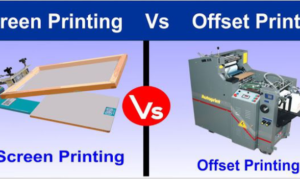In printing ink, many resins are utilized as connecting materials. Connection substance is a sticky liquid that has a variety of effects on many elements. It functions as a pigment carrier, connecting powder-like pigments and other solids so that they can be affixed to the printed material. In addition to controlling the fixing speed and drying type, the connection material offers the ink a certain sheen, frictional resistance, and yellowing resistance. Other ink qualities, such as viscosity, yield value, and fluidity, are influenced by the connecting material to some extent.
Ink resins serve as pigment carrier in ink. Because the connecting material affects many of the critical features of printing ink, the quality of these resins has a direct impact on its performance. As a result, there is a saying that high-quality connection material produces high-quality printing ink. In the market, there are four basic types of resins that have been adjusted to fulfil the needs of printing ink.
We Have Recent Updates of Ink Resins Market in Sample Copy, Click Here
- Acrylic Resins
Acrylic resin refers to acrylic acid, methacrylic acid, and their derivatives as a whole. Acrylic resin coatings, also known as acrylic radiation coatings, are thermoplastic or thermosetting resin coatings created by copolymerizing acrylic resin with methyl acrylate, styrene, and other acrylates as the primary body. Because the thermoplastic acrylic resin is not further crosslinked during film production, its relative molecular weight is quite high, and it has good light and color retention, as well as water and chemical resistance. It can also dry quickly, be easily constructed, and be repainted and reworked.
- Epoxy Resins
Epoxy resin is a type of polymer that has more than two epoxy groups in it. Epichlorohydrin and bisphenol A or polyols condense to form this substance. It’s a thermosetting resin with rings that may be opened with a range of active hydrogen compounds and then cured by cross-linking to form a network structure. Bisphenol-A type epoxy resin has the highest yield, variety, and quality, as well as a huge number of new modified types that can fulfil the growing demand in the ink business. Epoxy resin is frequently utilized in electrical appliances and electronic components due to its unique features such as high insulation, high structural strength, and strong sealing properties.
- Polyurethane Resins
Polyurethane resin is a polymer with repeating structural units in its backbone. Polymerization of isocyanates monomers and hydroxyl compounds produces it. It is insoluble in non-polar groups due to the carbamate group’s strong polarity, and it has good oil resistance, toughness, wear resistance, age resistance, and adhesion. Several types of polyurethanes, including elastomers, thermoplastic resins, and thermosetting resins, can be made using various raw ingredients and are appropriate for a wide temperature range (-50°C to 150°C).
Top Key Players in global ink resins market include Arakawa Chemical, Arizona Chemical, BASF SE, Evonik Tego Chemie GmbH, Hydrite Chemical, IGM Resins, Indulor, Lawter B.V., Royal DSM N.V., and The Dow Chemical Company.
Download Report Summary Of Ink Resins Market
Application Outlook
- Flexible Packaging
- Printing & Publication
- Corrugated Cardboards & Cartons
- Others
Type Outlook
- Modified Cellulose
- Modified Rosin
- Hydrocarbon
- Acrylic
- Polyamide
- Polyurethane
- Others
To Identify The Key Trends In The Ink Resins Industry, Research Study At: https://www.reportsanddata.com/report-detail/ink-resins-market


































